A Nautical Beginning
In the vibrant cityscape of Miami, Florida, one structure stands out for its unique purpose and history - the Miami Marine Stadium. Nestled on Virginia Key, this marine stadium has a storied past as intriguing as the powerboat races it was built to host.
The Miami Marine Stadium, a creation of the Millman Construction Company of Miami Beach, was born in 1963 on a parcel of land generously given to the city by the Matheson family. It marked a milestone in U.S. architectural history as the first stadium purpose-built for powerboat racing.
Its significance didn't go unnoticed, and in 2018, the stadium was proudly listed on the National Register of Historic Places.
Memories Etched in Concrete
The 6,566-seat stadium, a marvel of the 1960s, was a dream brought to life by architect Hilario Candela, a recent Cuban immigrant. The project, costing around $2 million then, was an ambitious venture that promised thrilling water sports in a spectacular setting.
Tragically, the opening day was marred by the death of a speed boat racer, James Tapp. But life at the stadium continued, and it became a beloved landmark over time. With a backdrop of Downtown Miami and Miami Beach, the stadium hosted many events.
Musical luminaries like Mitch Miller and Sammy Davis, Jr. entertained audiences, and U.S. President Richard Nixon, whose winter residence was nearby, attended events.
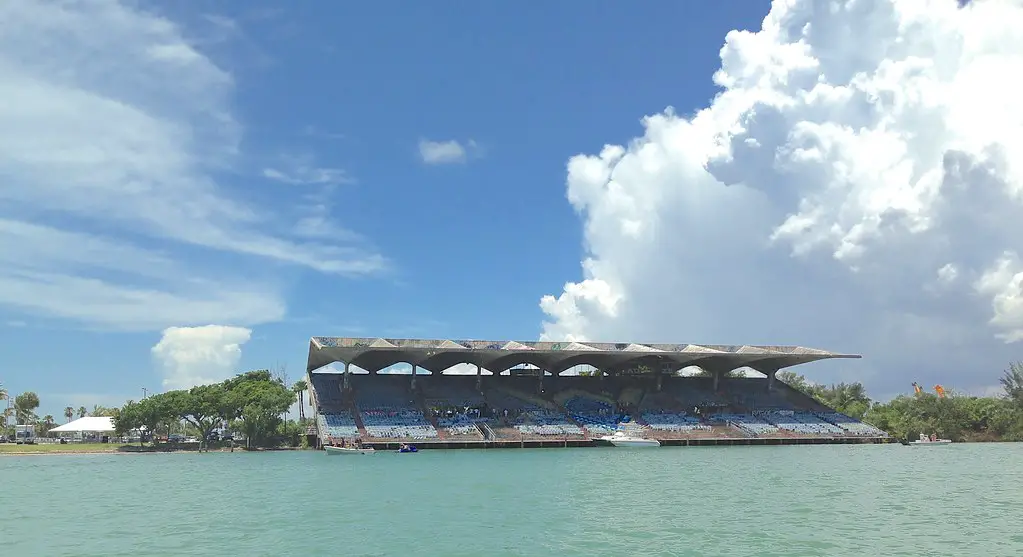
The stadium wasn't just about powerboat races and concerts. It also served as a sporting arena for boxing matches starting in 1972 and was prominently featured in the 1967 Elvis Presley film Clambake.
However, the stadium's glory days ended abruptly in 1992 following Hurricane Andrew. Deemed unsafe under the Miami-Dade County building code, the stadium closed its gates. Yet, hope for a revival flickered in 2004 when $3 million was pledged for restoration and renovation.
An Echo of Thrilling Races
The Miami Marine Stadium was a playground for world-class powerboat events. From Unlimited Hydroplane to Grand National divisions, the stadium hosted many races, the echoes of which still seem to resonate.
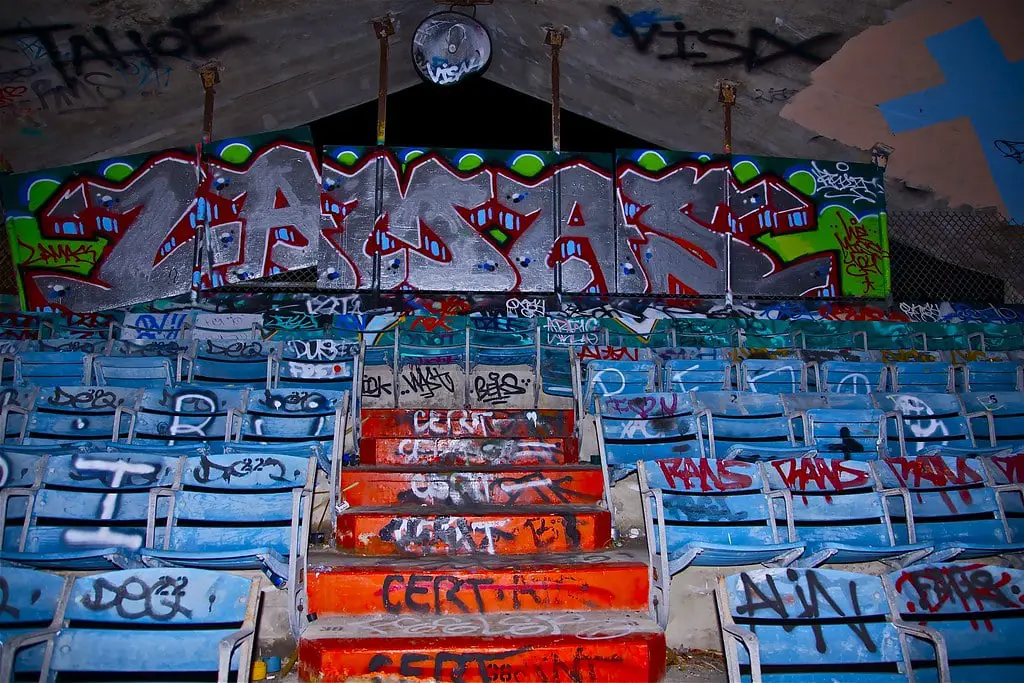
Nationally televised events like the Orange Bowl Regatta and the ESPN All-American Challenge Series were held here, adding to the stadium's prestige.
The last primary race, the 20th Annual Budweiser Hydroplane Regatta, marked the end of an era in June 1990. Since its closure, the stadium has become a canvas for graffiti artists, adding a touch of urban art to its weathered façade.
Yet, the stadium still attracts visitors, offering panoramic views of Miami's central business districts and barrier islands.
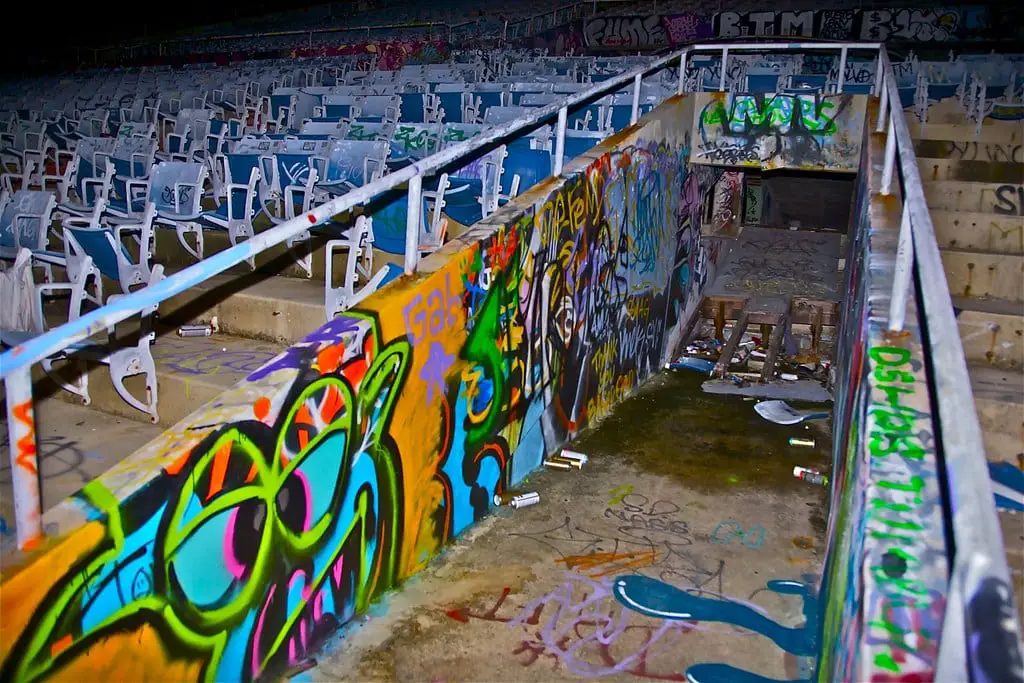
An Architectural Feat
A marvel of concrete, the Miami Marine Stadium boasted a unique design. The cantilevered folded plate roof, anchored to the ground by eight massive slanted columns, was a sight to behold.
The seating arrangement was cleverly designed to give spectators an unobstructed view of the watercourse, a design feat quite ahead of its time.
The stadium's design echoes other well-established stadiums in Latin America and Europe, such as the Florence Stadium and the University Stadium in Caracas. It even resembles the horse-racing Hipódromo de la Zarzuela in Madrid, Spain, showcasing a blend of architectural inspirations.
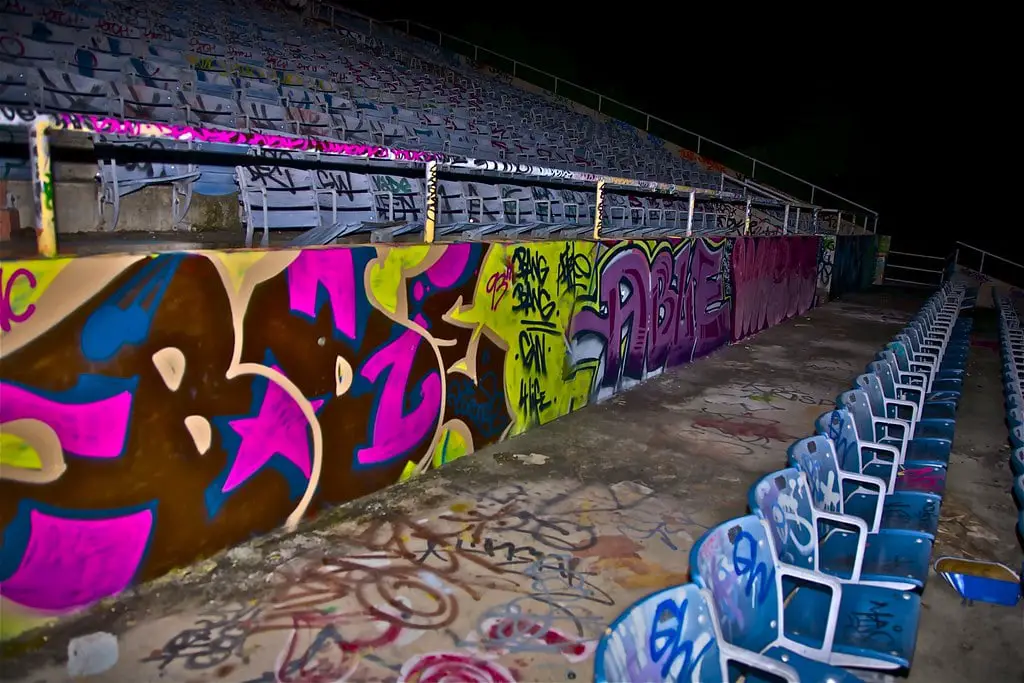
A Beacon of Hope
The stadium's story didn't end with its closure. The National Trust for Historic Preservation highlighted the stadium's importance on April 28, 2009, by naming it one of America's 11 Most Endangered Historic Places. This marked the beginning of a new chapter in the stadium's life.
In March 2012, the stadium earned the title of National Treasure. This recognition extended beyond the boundaries of Miami, reaching the Florida Chapter of the American Institute of Architects, which placed the stadium on its list of Florida Architecture: 100 Years. 100 Places in April 2012.
Despite the toll of years and natural calamities, the Miami Marine Stadium stood resilient, its potential for revival recognized by respected institutions.
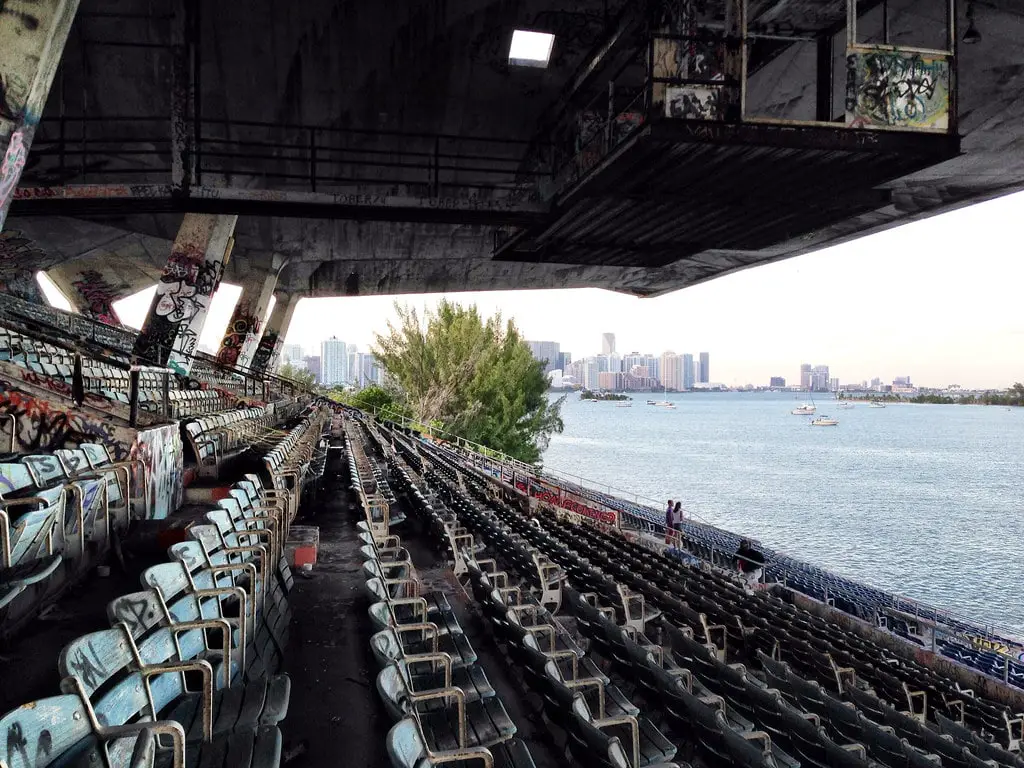
Concluding Reflections
The Miami Marine Stadium is more than just a concrete and steel structure; it symbolizes a city's love for water sports, a testament to architectural prowess, and a canvas of cultural expression. It bears the marks of history, from the thrilling powerboat races and high-energy concerts to the graffiti that adorns its walls today.
Despite being declared unsafe in the aftermath of Hurricane Andrew, the stadium remains etched in the memories of those who've experienced its glory days. And, with the ongoing efforts to restore and revitalize it, there's hope that future generations might yet get to create their memories at this historical and cultural landmark.
The Miami Marine Stadium serves as a reminder that while buildings might close their doors, the stories they house continue to live on in the hearts of those who've walked their grounds. It inspires, reminding us of the rich tapestry of events that have shaped it and the promise of what it could still become.
